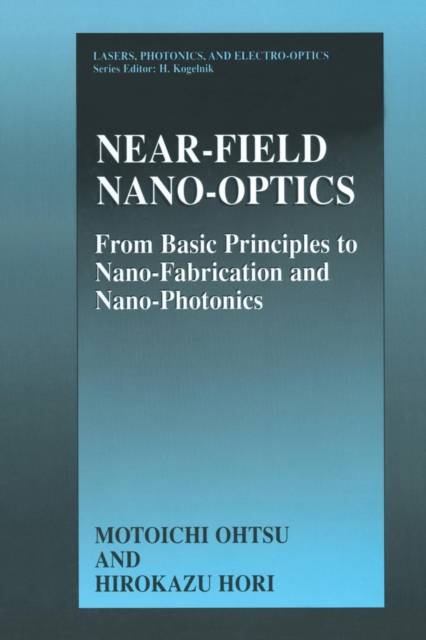
- Afhalen na 1 uur in een winkel met voorraad
- Gratis thuislevering in België vanaf € 30
- Ruim aanbod met 7 miljoen producten
- Afhalen na 1 uur in een winkel met voorraad
- Gratis thuislevering in België vanaf € 30
- Ruim aanbod met 7 miljoen producten
Zoeken
Near-Field Nano-Optics
From Basic Principles to Nano-Fabrication and Nano-Photonics
Motoichi Ohtsu, Hirokazu Hori
€ 76,95
+ 153 punten
Uitvoering
Omschrijving
Conventional optical science and technology have been restricted by the diffraction limit from reducing the sizes of optical and photoruc devices to nanometric dimensions. Thus, the size of optical integrated circuits has been incompatible with that of their counterpart, integrated electronic circuits, which have much smaller dimensions. This book provides potential ideas and methods to overcome this difficulty. Near-field optics has developed very rapidly from around the middle 1980s after preliminary trials in the microwave frequency region, as proposed as early as 1928. At the early stages of this development, most technical efforts were devoted to realizing super-high-resolution optical microscopy beyond the diffraction limit. However, the possibility of exploiting the optical near-field, phenomenon of quasistatic electromagnetic interaction at subwavelength distances between nanometric particles has opened new ways to nanometric optical science and technology, and many applications to nanometric fabrication and manipulation have been proposed and implemented. Building on this historical background, this book describes recent progress in near-field optical science and technology, mainly using research of the author's groups. The title of this book, Near-Field Nano-Optics-From Basic Principles to Nano-Fabrication and Nano-Photonics, implies capabilities of the optical near- field not only for imaging/microscopy, but also for fabrication/manipulation/proc- essing on a nanometric scale.
Specificaties
Betrokkenen
- Auteur(s):
- Uitgeverij:
Inhoud
- Aantal bladzijden:
- 386
- Taal:
- Engels
- Reeks:
Eigenschappen
- Productcode (EAN):
- 9781461371922
- Verschijningsdatum:
- 15/10/2012
- Uitvoering:
- Paperback
- Formaat:
- Trade paperback (VS)
- Afmetingen:
- 152 mm x 229 mm
- Gewicht:
- 539 g

Alleen bij Standaard Boekhandel
+ 153 punten op je klantenkaart van Standaard Boekhandel
Beoordelingen
We publiceren alleen reviews die voldoen aan de voorwaarden voor reviews. Bekijk onze voorwaarden voor reviews.











